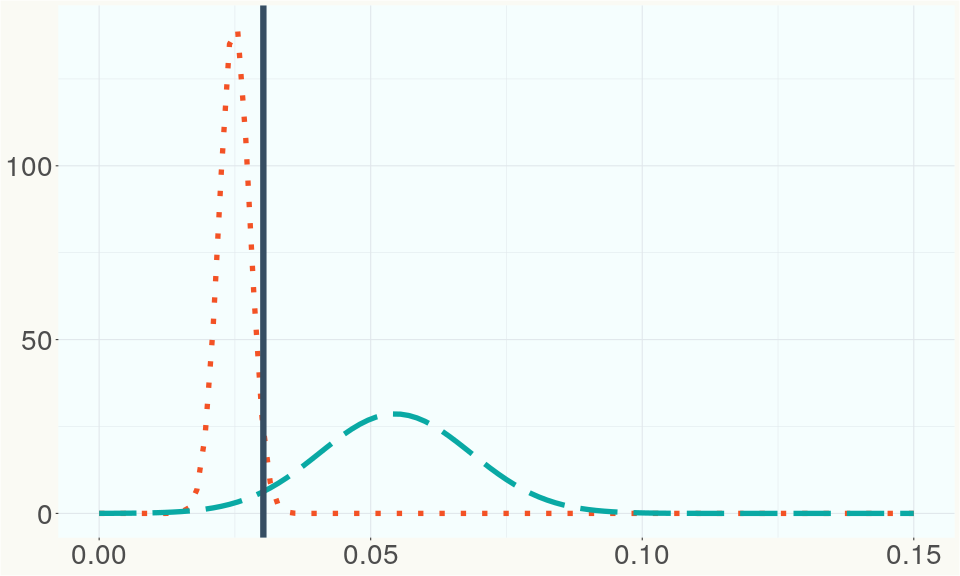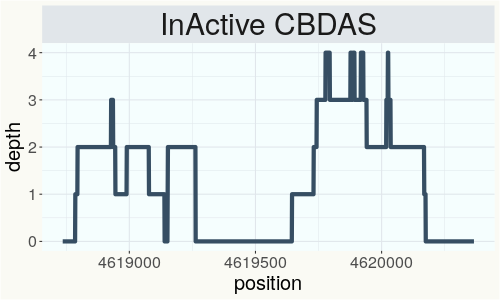BCH Rt-Fl
RSP 13141
Grower: Zamir Punja
General Information
- Sample Name
- BCH Rt-Fl-20240516
- Accession Date
- June 5, 2024
- Reported Plant Sex
- Female
- Report Type
- Whole-Genome Sequencing
- Microbiome
- Krona Plot
- Fungal Microbiome
- Krona Plot
- Bacterial Microbiome
- Krona Plot
- Viral Microbiome
- Krona Plot
The strain rarity visualization shows how distant the strain is from the other cultivars in the Kannapedia database. The y-axis represents genetic distance, getting farther as you go up. The width of the visualization at any position along the y-axis shows how many strains there are in the database at that genetic distance. So, a common strain will have a more bottom-heavy shape, while uncommon and rare cultivars will have a visualization that is generally shifted towards the top.
Chemical Information
Cannabinoid and terpenoid information provided by the grower.
Cannabinoids
No information provided.
Terpenoids
No information provided.
Genetic Information
- Plant Type
- Type IV
File Downloads
The bell curve in the heterozygosity visualization shows the distribution of heterozygosity levels for cannabis cultivars in the Kannapedia database. The green line shows where this particular strain fits within the distribution. Heterozygosity is associated with heterosis (aka hybrid vigor) but also leads to the production of more variable offspring. When plants have two genetically different parents, heterozygosity levels will be higher than if it has been inbred or backcrossed repeatedly.
The ratio of reads mapped to Y-contigs to reads mapped to the whole Cannabis genome (Y-ratios) has been demonstrated to be strongly correlated with plant sex typing. This plot shows the distribution of Y-ratios for all samples in our database which were sequenced with the same method (panel or WGS) as this sample and where this sample falls in the distribution.

This chart represents the Illumina sequence coverage over the Bt/Bd allele. These are the three regions in the cannabis genome that impact THCA, CBDA, CBGA production. Coverage over the Active CBDAS gene is highly correlated with Type II and Type III plants as described by Etienne de Meijer. Coverage over the THCA gene is highly correlated with Type I and Type II plants but is anti-correlated with Type III plants. Type I plants require coverage over the inactive CBDA loci and no coverage over the Active CBDA gene. Lack of coverage over the Active CBDA and Active THCA allele are presumed to be Type IV plants (CBGA dominant). While deletions of entire THCAS and CBDAS genes are the most common Bt:Bd alleles observed, it is possible to have plants with these genes where functional expression of the enzyme is disrupted by deactivating point mutations (Kojoma et al. 2006).



This chart represents the Illumina sequence coverage over the CBCA synthase gene.

Variants (THCAS, CBDAS, and CBCAS)
No variants to report
Variants (Select Genes of Interest)
No variants to report
Nearest genetic relatives (All Samples)
- 0.315 JL Cross 6 (RSP11507)
- 0.324 Liberty Haze (RSP11000)
- 0.329 Chem 91 (RSP11185)
- 0.338 Purple Urkle (RSP12890)
- 0.338 JL Cross 14 (RSP11515)
- 0.339 Trump x Trump (RSP11466)
- 0.339 Master Kush (RSP11182)
- 0.340 Sour Tsunami x Cataract Ku (RSP11183)
- 0.341 Recon (RSP10755)
- 0.341 Pie Face Mac (RSP11974)
- 0.344 Saint Jack (RSP11179)
- 0.346 Headcheese (RSP11192)
- 0.347 Original Diesel (RSP12895)
- 0.347 SHERBERT (RSP11355)
- 0.347 Tahoe OG (RSP11189)
- 0.348 Peanut Butter Breath (RSP11640)
- 0.350 SLH C3 (RSP12943)
- 0.350 SLH Buds (RSP13131)
- 0.352 RKM-2018-001 (RSP11092)
- 0.352 Deadhead OG (RSP11463)
Most genetically distant strains (All Samples)
- 0.623 Jamaican Lion (RSP12916)
- 0.614 JL 3rd Gen Mother (RSP11214)
- 0.607 JL yellow (RSP11075)
- 0.604 Jamaican Lion (RSP12917)
- 0.585 JL 4th Gen 6 (RSP11200)
- 0.578 Jamaican Lion (RSP12915)
- 0.576 JL 3rd Gen Mother (RSP11197)
- 0.560 JL 4th Gen 1 (RSP11193)
- 0.539 JL 4th Gen 5 (RSP11199)
- 0.530 JL Tent 4 (RSP11491)
- 0.523 JL 4th Gen 3 (RSP11195)
- 0.514 Cherry Blossom (RSP11323)
- 0.513 JL 4th Gen 4 (RSP11198)
- 0.511 JL Cross 9 (RSP11510)
- 0.510 JL 4th Gen 2 (RSP11194)
- 0.508 JL Tent 2 (RSP11489)
- 0.507 JL x NSPM1 4 (RSP11482)
- 0.507 JL Cross 17 (RSP11518)
- 0.506 Jamaican Lions Ancestor (RSP11127)
- 0.502 Jamaican Lion (RSP12913)
Nearest genetic relative in Phylos dataset
- Overlapping SNPs:
- 2
- Concordance:
- 2
Nearest genetic relative in Lynch dataset
- Overlapping SNPs:
- 4
- Concordance:
- 3
Blockchain Registration Information
- Transaction ID
-
ff179a86e510bd2b
bfc119dc4a647311 c611b72df4d990a8 3b4e602f6df88d82 - Stamping Certificate
- Download PDF (39.5 KB)
- SHASUM Hash
-
84d759e9cc92c9a938615503e8db4300 e80669b8ad7e4ebb 59c1c471358f764a